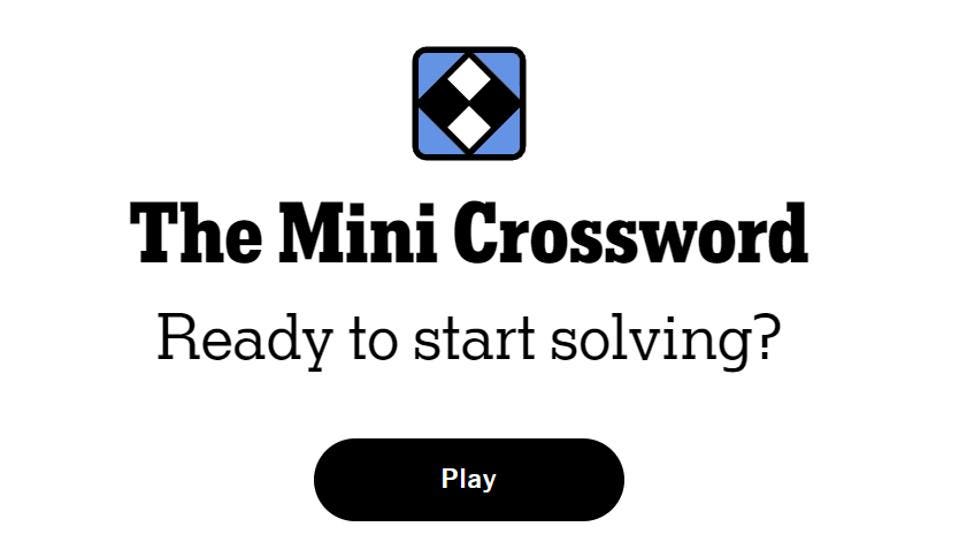Production of natural cosmetics, Lyon School of Medicinal Plants. Participants produce several care … More
The venture capital world is witnessing a profound transformation as investors pivot toward “low-tox” companies—brands built around non-toxic formulations across beauty, personal care, home products, fashion, and wellness. This movement represents more than consumer preference; it’s a fundamental restructuring of how consumer goods are conceived, manufactured, and scaled.
The numbers tell a compelling story. According to a January 2024 report by MarketResearch.biz the clean beauty market alone was valued at $8.7 billion in 2023 and is expected to reach $39.0 billion by 2033, with a compound annual growth rate of 16.65 percent. These figures dwarf traditional beauty growth rates and signal a permanent shift in consumer expectations.
Yet venture activity tells a more nuanced story. According to PitchBook data from July 2024, VC investments into beauty startups have tapered from previous highs to just 93 deals and $438.8 million raised through the first seven months of 2024. This cooling doesn’t signal waning interest—rather, it reflects a maturing market where investors are becoming more discerning about which low-tox brands deserve backing.
Market Dynamics: Beyond the Hype
The $441 billion global beauty industry grew 7 percent annually from 2022 to 2024, according to McKinsey’s “State of Beauty 2025” report, fueled by seemingly insatiable appetite for newness, but McKinsey expects the global beauty market to grow 5 percent annually through 2030, suggesting moderation ahead. This deceleration creates both opportunity and risk for low-tox ventures.
The consumer thesis remains robust. Approximately 68 percent of consumers seek clean ingredient beauty products in the United States, while 93 percent of US consumers have used any “clean” personal care products in the past 12 months. However, 36 percent of respondents said they decided against buying certain products because they were concerned about their environmental impact, highlighting the sophisticated decision-making process among conscious consumers.
The COVID-19 pandemic accelerated awareness around ingredient safety. Consumers have become more conscientious about their individual well-being and therefore prefer safe and non-toxic products. This behavioral shift appears permanent, creating sustainable tailwinds for low-tox brands.
Competitive Analysis: Three-Tier Market Structure
Tier 1: Incumbent Giants – Acquisition-Driven Transformation
Traditional powerhouses—Unilever, Procter & Gamble, L’Oréal, Johnson & Johnson, and Coty—dominate through scale, distribution muscle, and deep pockets. Their approach to the low-tox trend centers on three strategies: selective acquisitions of promising clean brands, reformulation of flagship products, and launch of clean sub-brands.
Acquisition Strategy: Unilever’s purchase of Seventh Generation for $700 million in 2016 exemplified the “buy versus build” approach. L’Oréal’s acquisition of Youth to the People and Garnier’s reformulation toward sulfate-free products demonstrate how incumbents leverage existing infrastructure to scale cleaner formulations.
Reformulation Challenges: These companies face the complex challenge of maintaining profit margins while removing cost-effective synthetic ingredients. Internal R&D capabilities give them advantages in solving formulation challenges, but legacy manufacturing systems and supplier relationships create inertia. The result is often incremental improvement rather than revolutionary change.
Market Positioning Risks: Incumbent clean initiatives face inherent skepticism from conscious consumers who question authenticity. Their advantage lies in mainstream distribution and marketing budgets, but they struggle to achieve the emotional connection that drives premium pricing in the low-tox segment.
Market Scale vs. Technology Innovation for Low Tox companies
Tier 2: Direct-to-Consumer Challenger Brands – Mission-Driven Scale
Pure-play challenger brands built their entire identity around non-toxic formulations and radical transparency about ingredients. Companies like The Honest Company (Jessica Alba’s venture that went public via SPAC), Counter (acquired by The Carlyle Group for $1 billion), and Grove Collaborative (public via SPAC) represent this category’s evolution from startup to scaled enterprise.
Kosas stands out as a category winner, having raisedtotal funding with a notable Series B from Stripes, Circle Up, VMG Partners, Short List Capital, and Beechwood Capital in 2020. Founded by biologist Sheena Zadeh-Daly, Kosas demonstrates how scientific credentials combined with clean formulations can command premium pricing and investor confidence.
Caliray, launched by Urban Decay’s former founder Wende Zomnir in 2021, secured Series A funding with participation from True Beauty Ventures. This exemplifies how experienced beauty entrepreneurs leverage track records to secure investment for cleaner alternatives to their previous mass-market ventures.
True Beauty Ventures itself represents the maturation of the space, having announced an inaugural $42 million fund as well as $75 million second fund (as of June 2025) dedicated to D2C beauty and wellness startups, demonstrating institutional appetite for specialized investment vehicles focused on this category.
Challenger Brand Advantages: These companies benefit from authentic brand positioning, agile product development cycles, and direct relationships with conscious consumers. They excel at commanding premium pricing and generating social media engagement.
Scale Challenges: However, they face persistent headwinds including manufacturing costs that run 20-40 percent higher than conventional alternatives, limited distribution beyond direct-to-consumer channels, and the challenge of maintaining brand integrity while achieving mass-market scale. Many excel at generating initial trial but struggle with repeat purchase rates when premium pricing meets budget-conscious consumers.
Tier 3: Tech-Enabled Innovation Startups – Scalable Solutions
The most compelling investment opportunities may lie with companies leveraging technology to solve fundamental low-tox challenges around personalization, efficacy, and manufacturing efficiency.
Haut.AI raised €2 million in seed funding from LongeVC to expand its AI-powered skincare intelligence tools including Skin and Hair SaaS and SkinGPT. This Estonian startup represents the intersection of beauty tech and clean formulations, offering B2B solutions that help brands personalize products while maintaining clean ingredient profiles.
Precision Skin offers made-to-order skincare solutions driven by AI-enabled skin analysis similar to clinical environments. The company’s fully remote approach utilizes eco-friendly technology to minimize carbon emissions and environmental waste, addressing both personalization and sustainability concerns.
Biotech Innovations: Emerging companies are developing sustainable alternatives to traditional cosmetic ingredients through biotechnology. These include lab-grown alternatives to traditional emulsifiers, preservatives made from plant-based compounds, and biodegradable packaging materials integrated into product development.
Scalability Advantages: Tech-enabled startups possess the potential to solve the cost structure challenges that plague traditional clean beauty brands. By leveraging data for personalization, optimizing formulations through AI, and streamlining manufacturing through automation, these companies could achieve both clean credentials and favorable unit economics.
Investment Risk Factors: However, these ventures require longer development timelines, complex regulatory pathways, and significant technical risk. Unlike traditional D2C beauty brands that can launch with contract manufacturers, tech-enabled innovations often require substantial R&D investment before achieving product-market fit.
Sector-Specific Opportunities and Challenges
Beauty and Personal Care: The largest and most mature segment, where products free of parabens, sulfates, and phthalates saw the highest sales growth rates, while products that tout environmental benefits like cruelty-free, plastic-free or vegan saw even higher sales growth.
Home Care: Companies developing non-toxic cleaning products face the challenge of matching conventional product performance while avoiding harsh chemicals. Brands like Blueland (concentrated cleaning tablets) and Branch Basics (multi-purpose cleaners) have attracted investment by solving both efficacy and packaging waste problems.
Fashion and Textiles: The clothing industry’s shift toward non-toxic dyes, finishes, and materials presents longer-term investment opportunities. Companies focusing on organic cotton, low-impact dyes, and chemical-free fabric treatments are gaining traction, though technical challenges and supply chain complexity require patient capital.
Wellness: The supplement and wellness category has seen significant investment in companies promoting transparency about sourcing, testing, and manufacturing. However, regulatory complexity around health claims creates additional due diligence requirements for investors.
Investment Reality Check: Persistent Challenges
Despite compelling narratives, VCs face several structural headwinds when investing in low-tox companies. Manufacturing costs for clean formulations typically run 20-40 percent higher than conventional alternatives, pressuring unit economics. Regulatory compliance, while creating competitive moats, also increases time-to-market and capital requirements.
The sector faces definitional challenges that complicate investment decisions. Studies have proven that propylene glycol, parabens, sulfates, and many other ingredients targeted in the Clean Beauty Movement are non-toxic and non-carcinogenic, highlighting the complexity of defining what truly constitutes “clean” or “low-tox.”
Consumer behavior adds another layer of complexity. While awareness and intention remain high, translating conscious consumer interest into sustainable purchase behavior at scale remains challenging. Many clean brands excel at generating social media buzz and initial trial but struggle with repeat purchase rates when premium pricing meets budget-conscious consumers.
Forward-Looking Investment Thesis
In the United States, 46 percent of consumers (and 53 percent of Gen Z consumers) reported that they spent more on cosmetic procedures in 2024 than in 2023, according to McKinsey research suggesting continued willingness to invest in beauty and wellness. This demographic shift toward younger consumers who prioritize both efficacy and values-alignment creates sustainable tailwinds for low-tox brands.
The most compelling investment opportunities likely lie with companies that can solve the “clean and effective” equation—brands that deliver on both safety and performance while building sustainable unit economics. This points toward tech-enabled solutions that leverage AI for personalization, biotechnology for novel ingredients, and data analytics for optimized formulations.
Success will ultimately depend on identifying brands that combine scientific credibility with marketing sophistication, scalable technology with authentic brand positioning, and mission-driven founders with proven operational discipline. The low-tox revolution represents a genuine shift in consumer expectations and industry standards, but only ventures that can deliver on both values and value will attract and retain venture capital in an increasingly discerning market.









